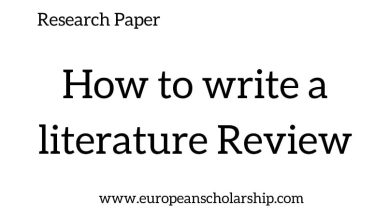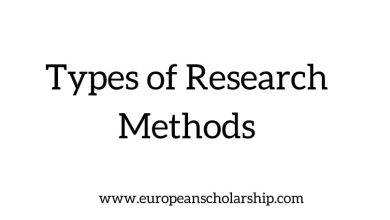
Research Abstract provide a summary of your published or unpublished research papers; typically this section (usually one paragraph with 7 to 6 sentences and 150 to 250 words ). A good abstract serves multiple functions. For instance:
An abstract allows readers to quickly grasp the essence or main ideas of your article or research study and decide whether they wish to continue reading further or skim it over first;
An abstract allows readers to quickly follow and recall key elements of your paper’s data, analyses, and arguments presented within. Furthermore, an abstract provides readers with an easy way to access essential details from it later.
Remember, bibliographic databases rely on abstracts and titles as key identifiers of published articles; what you write here can help others easily locate your research article.
If you are writing an abstract for class essays, your instructor might provide specific guidelines as to what should be included and the format of your abstract. Furthermore, academic journals also have distinct requirements when it comes to abstract submission. While you might follow some general guidelines listed here and elsewhere on these pages for writing abstracts for these types of submissions, make sure that in addition to doing your research, you learn all you can about what the requirements of that journal/course require when creating abstracts for submissions.
An abstract of a research paper sums up the important aspects of the whole paper in a specified order. That contains the entire purpose of project and research issues to study. Secondly the abstract should define the basic project design. Thirdly, It should describe the major findings of your research and results obtained. Fourth, it briefly summarizes the conclusions and interpretations of your research study.
Check Also: Cambridge Scholarships and Vice-Chancellor’s Awards 2024
Impact of a good Research Abstract:
Table of Contents
The abstract of your paper or thesis highlights the major findings of your research. It gives an idea to the readers whether they will continue to read the rest of the study. That’s why important aspect of your paper such as results, methods, and other important findings should be added in the abstract.
how will you find out that your research abstract have the required information? there is a simple rule imagine yourself as a 3rd party researcher reading your abstract. Then think about the information you have provided. Whether it is enough to describe your research? if you find it ok then the abstract is good enough. If you do not feel happy then try to add more key points in the abstract.
Types of Abstracts:
There are four types of abstract generally.
Critical Research Abstract:
The critical abstract explains the main content and knowledge of the research. Besides this, it describes briefly the critical judgements and statements on the authenticity, validity, and performance of the overall research paper. The researcher critically goes through the study area and compares the present work with similar reports in the literature. Due to the in-depth study, the critical abstract is lengthy and around 400-500 words. That is why critical abstracts are not frequently used in research papers.
Descriptive Research Abstract:
Descriptive abstracts are simple abstracts that provide information about the research paper. It does not criticize the present work. rather it highlights the important aspects of the present study. It gives information about the methods, results, and findings of the work. Descriptive abstracts also provide the main purpose and importance of the research done.
Informative Research Abstract:
Most abstracts are informative. Although they still do not evaluate or comment on a work. Although they still don’t comment on or evaluate a work, what they do is not just describe it. A rich abstract can be used as a substitute for the work. it can be said that the researchers put forward and explained all the main arguments in the paper, as well as the main evidence and results. the summary of the information includes the informative data in the description (the purpose of the research, Scope, and method). furthermore, it also consists of the results of the research and a conclusion that may contain suggestions from the author. the abstract length varies subject-wise, but the perfect abstract contains a maximum of 300 words.
The Contents of a Research Abstract:
Abstracts provide concise summaries of key ideas listed below; your paper’s body will naturally provide greater depth. Below are examples that showcase how much of an abstract should be dedicated to every type of information; its order depends upon what work project type or style the abstract describes. Sometimes information may need to remain hidden instead of stated outright. The American Psychological Association Manual for Publication provides precise instructions about which information needs to be included in an abstract for various kinds of social science papers: empirical research, literature reviews, or meta-analyses as well as theoretical papers dealing with methodological issues or case studies.
Here are some of the data commonly seen in abstracts:
- Background information, the subject being researched, the specific focus or subject area you wish to pursue; your most pressing or pertinent query or issue that needs addressing through research are all crucial parts of a comprehensive approach to any study undertaken by any researcher or student.
- What information exists and was previously conducted/discovered regarding this matter?
- What are your primary motives, urgency, and goals of research? How should these concerns be addressed? For instance: are you researching an unfamiliar topic; is it worthy of study; would implementing new techniques change existing data or ideas; are disagreements with existing literature present…?..
- Your research and/or analytical techniques, with which you conduct, and your primary conclusions, findings, results, and arguments (i.e. the arguments presented as part of their defense.).
- Abstracts should communicate the value or results of research or arguments presented within them, without needing readers to wade through your entire paper to comprehend. They don’t usually refer to sources; most abstracts will simply outline things learned during your research process and what was discovered; then proposed within an essay when writing your final draft based upon that specific literature influencing it.
Check Also: AACR Research Training Fellowships 2024-2025 | USA





